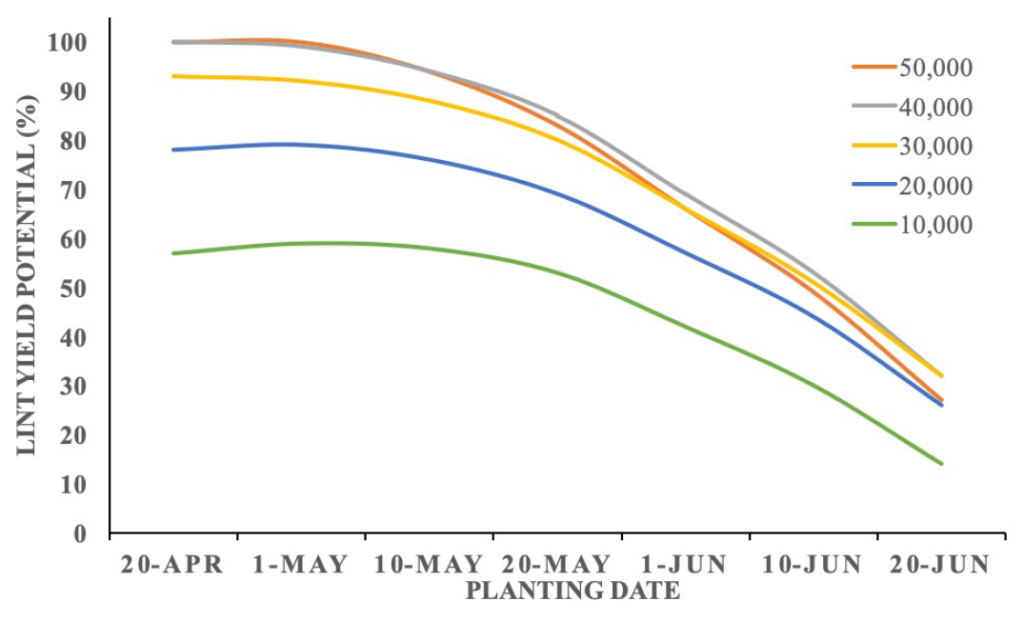
With the majority of our cotton acreage yet to be planted, many have asked how late should I plant? To answer that question, you must estimate current lint yield potential. Dr. Shawn Butler, who recently finished his PhD in the UT Cotton Agronomy Program, compiled data from 10 field trials in Tennessee, Mississippi and Missouri to assist those interested in estimating lint yield potential based on planting date and plant population (not seeding rate, but actual plants emerged per acre). The figure above was generated with that data.
To best understand our current situation, it is most appropriate to follow the gray line, which represents a field with a good stand (note the response from 30,000-50,000 plants per acre is almost identical). As I write this on the 21st day of May, our lint yield potential represents approximately 90% of what it would have been if we could have achieved a good stand on May 1st. In other words, if we planted today, a field with an initial 1,200 lb lint yield potential will likely now be able to produce 1,080 lb lint per acre. By June 1st, that yield potential declines to 840 lb lint per acre. If we were to consider that rate of decline on a per-day basis, a field with 1,200 lb lint yield potential will likely see a 24 lb lint yield reduction each day planting is delayed after May 20th.
A couple of assumptions should also be mentioned. If we get an abnormally warm fall, it is very possible for yield potentials to exceed the prediction. Conversely, if we get an abnormally cool fall, the yield potentials will likely fall below the prediction. The model used to generate these curves included a robust data set and predictions will give good insight to lint yield potential in the average year. Keep that in mind.
Second, this data was generated with DP 1522 B2XF- an early-mid maturing variety. If planting a mid-maturing variety, I would argue the rate of decline after May 20th will be considerably larger. As such, it is very important to consider variety maturity as we move closer to June. Based on historical average accumulated heat units, we will likely need to move towards early maturing cultivars.
Unfortunately, our late April/early May planted cotton has struggled and, in some areas, failed. Dr. Butler and I recently incorporated data from his dissertation into a replant guide which can be accessed here.
One last item- Dr. Chris Boyer is currently updating a blog post from last May concerning prevented planting. As soon as that is complete, it will be posted and emailed to those on our emailing list. As always, if you have any questions feel free to reach out.

